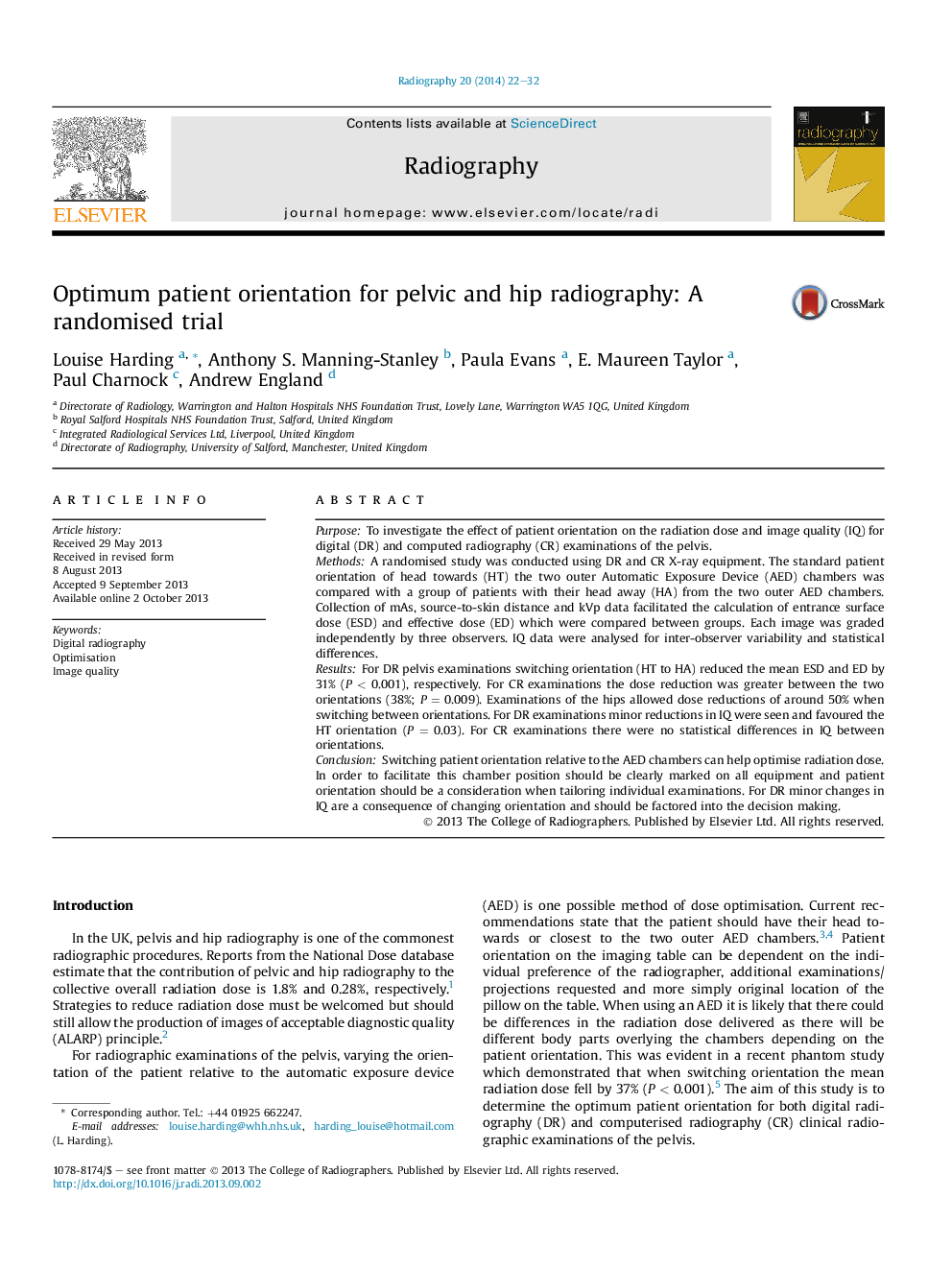| Article ID | Journal | Published Year | Pages | File Type |
|---|---|---|---|---|
| 2737341 | Radiography | 2014 | 11 Pages |
PurposeTo investigate the effect of patient orientation on the radiation dose and image quality (IQ) for digital (DR) and computed radiography (CR) examinations of the pelvis.MethodsA randomised study was conducted using DR and CR X-ray equipment. The standard patient orientation of head towards (HT) the two outer Automatic Exposure Device (AED) chambers was compared with a group of patients with their head away (HA) from the two outer AED chambers. Collection of mAs, source-to-skin distance and kVp data facilitated the calculation of entrance surface dose (ESD) and effective dose (ED) which were compared between groups. Each image was graded independently by three observers. IQ data were analysed for inter-observer variability and statistical differences.ResultsFor DR pelvis examinations switching orientation (HT to HA) reduced the mean ESD and ED by 31% (P < 0.001), respectively. For CR examinations the dose reduction was greater between the two orientations (38%; P = 0.009). Examinations of the hips allowed dose reductions of around 50% when switching between orientations. For DR examinations minor reductions in IQ were seen and favoured the HT orientation (P = 0.03). For CR examinations there were no statistical differences in IQ between orientations.ConclusionSwitching patient orientation relative to the AED chambers can help optimise radiation dose. In order to facilitate this chamber position should be clearly marked on all equipment and patient orientation should be a consideration when tailoring individual examinations. For DR minor changes in IQ are a consequence of changing orientation and should be factored into the decision making.
